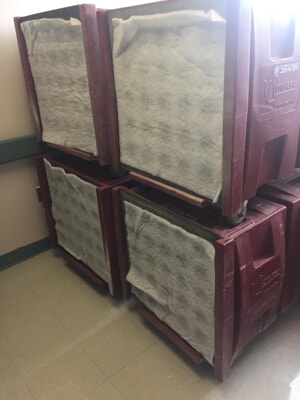
Recently, it has become increasingly clear that the average dental office providing routine care like cleanings, checkups and teeth fillings, repair, and replacement, tend to create an inordinate amount of airborne products. The disposable Gloves, masks and gowns, respirators and protective eye wear and face shields, are critical in this area.ĭental Office as Hospital? Can going to the dentist be safer now? Personal Protection Equipment (PPE) boils down to the equipment worn by healthcare workers and others to reduce exposure to communicable diseases. Here, the environment for handling infectious patients is coordinated with the facility’s HVAC systems in order to prevent transmission of airborne threats, including viruses, ant other infectious agents from flowing into the areas outside the designated treatment zone(s). These special areas are likely to be mandatory permanent installations in all hospitals in the wake of the COVID-19 pandemic. In hospitals, these dedicated areas are known as “ Airborne Infection Isolation Rooms” or AIIRs. This would include the various scenarios of potential infectious sources, and routes of transmission, in order develop healthy habits and effective protocols against the spread of infectious agents and disease.Įnvironmental controls are concerned with the containment of respiratory agents which can be transmitted through the air. Written guidelines, emergency practice drills, and procedural systems are required to inform patients and staff of the risks posed by the threat. These new guidelines must include, but not be limited to, administrative, environmental and personal measures and anti-infective controls.Īdministrative controls are measures designed to reduce risk for exposure which have been integrated into office policies and best work practices. It is time that all dental offices, must be considered in the same way as hospitals, and be subject to the same guidelines as those healthcare facilities. This overlooked and underestimated vector pathway must be dealt with in a logical and scientific manner. In light of the novel Coronavirus COVID-19 Pandemic, it has become clear that airborne transmission of pathogens, including viruses that are found in the oral cavity, pose unique challenges to our health.

Sterilization of reusable items, and treatment of hard surfaces, in addition to personal protections, were the focus of this report.Įven though it is acknowledged by the CDC that airborne transmission from coughing, sneezing, or talking, should be considered, there were no specific recommendations made to capture and handle, the potentially pathogenic aerosols created daily in dental offices across the country. Furthermore, the guidelines presented were primarily designed to address blood-borne and saliva-borne transmission of pathogens. Until now, the CDC’s Guidelines for Infection Control in Dental Health-care Settings (last updated 2003) report had consolidated recommendations for preventing and controlling infectious diseases, which included management of personnel health and safety concerns related to infection control in the dental setting.


 0 kommentar(er)
0 kommentar(er)
